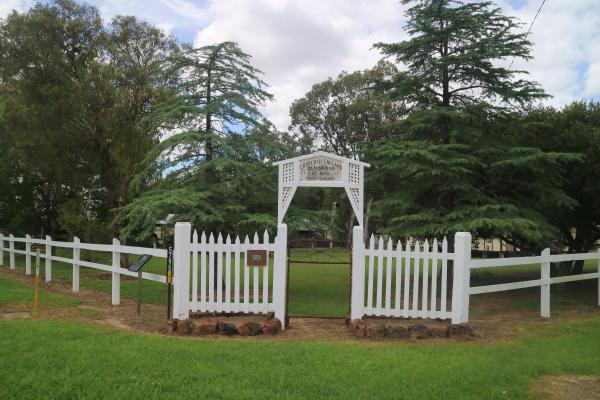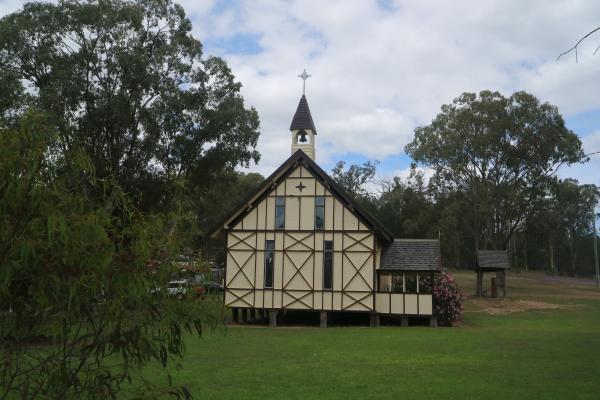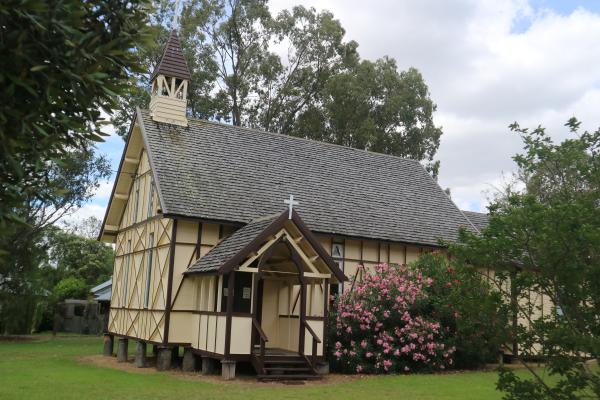St Augustine’s Church in Leyburn is holding their 150 year celebration on 14 November.
Lunch will be held afterwards at QCWA Hall, and attendees are requested to bring along something to share.
Their Arch Bishop will be attending and celebrating the Eucharist at 10 am in Leyburn.
RSVP to David Snape by calling him on 0475 125 471 or via email at David.snape@anglicanchurchsq.org.au
According to David Owens, creator of ‘The Lost Faces of Warwick and District’ Facebook group, St Augustine’s is one of Queensland’s earliest church’s and is a rare example of a surviving timber church complete with a shingled roof. It was built and dedicated in 1871 and is located in Dove Street, Leyburn.
David shared details of the church’s history online., stating that St Augustine’s was erected in 1871 to the design of one of Queensland’s most notable architects, Richard George Suter (1827-1894).
Suter was responsible for the design of at least ten of some thirty-four churches built during the episcopate of Bishop Tufnell (1859-74) including St Mark’s in Warwick (1867-70) and St James’ in Toowoomba (1868-69) as well as a number of timber churches including St Andrew’s, Lutwyche (1866) and (the first) St David’s in Allora (1868). It is believed that St Augustine’s is the only timber church designed by Suter that still exists today. Suter also undertook a considerable amount of work for the Queensland Board of Education.
While Suter designed several churches constructed of stone, it was Suter’s timber churches such as St Augustine’s which presented a challenge to the theological thinking of the time which viewed timber as an unsuitable material to be used in the construction of the houses of God. Like his churches, Suter’s early schools used timber with outside studding as a construction technique, an ingenious modification of traditional half-timbered construction developed and popularised by Suter in Queensland. While he designed relatively few houses, he designed the magnificent homesteads East Talgai (1868) and Jimbour (1873-4). These two homesteads are some of the most substantial and distinguished ever erected in Queensland.
The church was built by John Baillie of locally grown timber, mostly spotted gum and cypress pine, all pit-sawn; with a wooden shingle roof. Although reputedly patterned on the form of English village churches, the expression of the timber work and the simplified Gothic motifs give St Augustine’s a delicate lightweight vernacular charm; there is a special quality of the internal light through the eaves and translucent windows. The belfry was completed in 1876 and the vestry added in 1918.
The stained-glass windows and other furnishings were donated as memorials to parishioners. The church furniture reputedly dates from the church’s establishment. The altar, lectern, pulpit and pews are of stained pine. To the west end of the aisle is the movable stone baptismal font. The altar has been moved away from the apse to face the congregation. The original timber screen from the altar is presently stored in the vestry. To the rear of the altar there are now stained-glass windows. To the side walls of the chancel are gas lamps on swivelling brackets.
The first baptism was registered on 21 December 1873 and the first wedding on 25 February 1874. Prior to the church being built, services had been conducted in various locations such as inns, stores, people’s homes and the courthouse. Between 1861 and 1889, Leyburn was the centre of a huge Parish which extended from Cambooya to Kingaroy and south to the NSW border.









